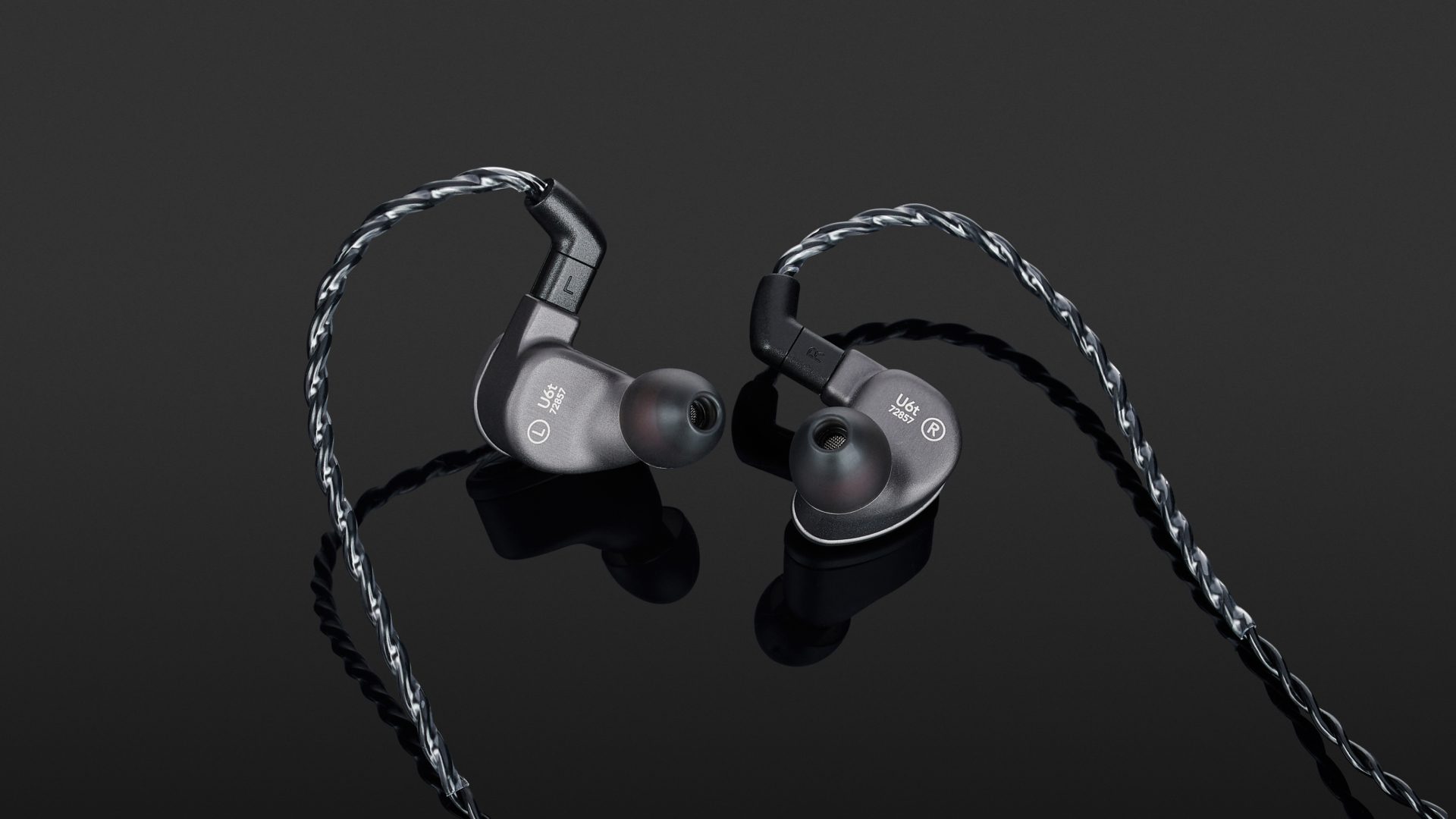The 64 Audio U6t simply sound excellent and offered me no reason not to give it the highest rating of five stars for its price range. Although the U6t is not completely neutral in the bass range, the results were fabulous and provided me with a rare listening pleasure. Added to this are first-class workmanship and excellent wearing comfort.
Admittedly: You have to dig deep into your pocket, but you get an undoubtedly professional IEM headphone with universal genre recommendation and monitoring qualities. The 64 Audio U6t gets my recommendation for the stage, as a portable reference monitor, and as audiophile headphones for music enjoyment. In addition, the Apex modules allow you to choose between a fuller and a more analytical version. If you want any more performance in this class, you will have to invest more money. I give these a firm recommendation. But if you are looking for an extra portion of bass or an explicitly analytical sound character, you might want to look elsewhere.
First-class workmanship, superb wearing comfort and excellent sound. Although you’ll have to dig deep into your pocket for the 64 Audio U6t, you’ll get a professional IEM headphone with an all-round genre recommendation and genuine monitoring qualities.
On stage, 64 Audio’s in-ear monitors have long been the first choice for stars like Beyoncé. Even in the studio, renowned experts like Michael Brauer rely on the sound of these headphones, which draw their power from multiple balanced-armature drivers. The product range from the US manufacturer from Vancouver in Washington State represents consistently high-quality solutions. It includes models with up to 18 BA drivers per side and hybrid driver combinations with retail prices of almost 4,000 euros. 64 Audio even offers an entire model series with a custom-fit imprint for the user’s own ears in its range.
The 64 Audio U6t from the U series that we are testing here utilises the experience gained from knowledge of the rigours of on-stage use. They combine this with audiophile tuning and pack everything into a universal driver housing. The smallest model in this series, the U6t, comes with six BA drivers per side and uses two bass and two mid-range drivers, a Nio mid-high driver and a Tia tweeter.
Design
The dark grey, matte, in-ear device is smartly designed and is aimed to function for music playback alone, which is why extras such as a hands-free system or volume control are not provided: Plug in the cable, and off you go. However, the 64 Audio U6t does come with three so-called Apex modules that allow fine-tuning of the sound image (see below). The construction is of high quality, and it is elegant. It consists of ergonomically shaped earphones with an aluminium body and a replaceable connection cable. Furthermore, a round leather case and a selection of three fitting pieces, each in different shapes, are included in the package.
In practice
The twisted yet flexible cable from the robust, lightweight headphones is routed over the top of the ears and then fits snugly into the ear cup. Providing you use the right fitting piece, the 64 Audio U6t fit is both secure and deep in the auditory canal, which allows longer listening sessions without feeling pressure. The deliberately low-impedance cable is interchangeable via two-pin plugs and ends with a straight gold-plated mini-jack (3.5 mm). Cables with balanced 2.5 mm or Pentaconn connectors are also optionally available.
The aforementioned Apex modules primarily influence bass reproduction but also have an effect on the other frequency ranges. They are cylindrical passive inserts that are placed over the back of the headphones. There they influence the sound conduction as well as the pneumatic ventilation of the construction and thus also counteract listener fatigue. Depending on the model, there are one (m20), two (m15) or three (MX) ventilation channels. The pre-installed module is the well-balanced m15. The m20 sounds somewhat fuller and warmer, while the MX aims in a more analytical direction, with a leaner but more precise sound. The outer isolation, on the other hand, is exactly the opposite (-20, -15 and -10 dB).
A side note: As an alternative to the 64 Audio U6t, professional musicians might also want to take a look at the 64 Audio A6t model. Here, the earpiece is individually adapted to the shape of the owner’s ear and available in different colours if requested. While the specific fitting to the ear can offer an improved fit, the downside is certainly a lower resale value. But if the U6t already fit perfectly in your ears, then there is hardly any reason to go for the A6t.
The sound of the 64 Audio U6t
Being totally subjective and without looking at the measured values, I was thrilled. According to the manufacturer, the sound tuning of the 64 Audio U6t is based on the U12t and simply delivers great sound. Thanks to the impressive external isolation, you can immerse yourself deeply in the sound. The cable operation renders discussions about codecs of a wireless link pointless. It’s what the player delivers that counts! The low impedance design (10 ohms) should also ensure that the sound remains identical with a wide variety of sound sources. For our listening test, an Apple iPhone 8, an RME ADI-2 Pro FS R headphone amplifier and the standard m15 module were used.
The general thrust was wonderfully balanced with a discreet emphasis in the bass. At the same time, the 64 Audio U6t was punchy, powerful, but also stable. It met the requirements of stage use as an IEM with flying colours. It was not necessarily a restrained, purely analytical refinement, but it delivers a certain warmth and a lot of listening pleasure. Exemplary resolution was just as much a matter of course, given the recommended retail price of 1,399 euros.
Mixes are reproduced across genres with aplomb – from fully illuminated passages to intimate moments and elements that weren’t perfect when they were recorded. This has authentic monitor qualities, especially since the dynamics are not only comprehensible but also multi-dimensionally interlaced in the reproduction.
“I Can See Clearly Now” by the Holly Cole Trio provides proof of this confident dynamic range and the great richness of detail with the double bass, which here plays together with the grand piano and Holly Cole herself in a well-balanced manner.
The bass range is complete, coherent and does not show any of the weaknesses that some BA designs are said to have. Goldfrapp’s “Systemagic”, for example, pushes in the best manner, without any deductions in the mids and highs. In terms of tonality and accuracy, the 64 Audio U6t meets even the most demanding requirements and scores points with Hans Zimmer’s “Ripples in the Sand” with a full-bodied low bass, but without annoying booming. And in Rihanna’s “Pon de Replay” you can hear exactly when the low bass kicks in. Only at really high levels does the system reach its limits in combination with low bass.
The headphones we tested also convinced me in the midrange. The resolution and speech intelligibility was outstanding, without lacking a certain “warmth”. AC/DC delivered with “Fire Your Guns” as well as brutal metal productions (Meshuggah “Bleed”), which really pushed me against the wall when I turned up the level. Conversely, closeness, directness, and generally softer moods are also convincingly conveyed. The specific timbre of voices, instruments and the mix in general, along with their dynamic expression, was worth emphasising.
The 64 Audio U6t offered a quick response and an airiness that is usually hard to find in cheaper products. Detail was fantastic, giving the soundstage an enveloping spaciousness, width and speed – all in the right fatigue-free balance. At the same time, the treble range was clearly comprehensible in line with the original. Slayer’s midboard “Repentless”, for example, lacked a bit of sparkle, while Whitney Houston’s “Until You Come Back” gave the rimshots the air they needed. The 64 Audio U6t also showed the borderline of unwanted harshness of a production with certainty – another criterion of good monitors. Finally, it should be mentioned that the BA drivers do not lack “body” in this area either.
The panorama was sharply delineated and also quite broadly spread. This contributed to the transparency of the sound image. Spatial effects and doublings were very precise, and the room was also reproduced concisely. This was a real strength and, in the case of Malia’s vocal performance in “Celestial Echo”, it’s like literally taking a bath in Boris Blank’s electronic sample masterpiece. At the same time, the hi-hats and shakers were layered on top of each other in an optimally delineated way instead of sticking together. And finally, a beautiful three-dimensionality was formed via the reverberation spaces, which showed themselves with certainty, especially with percussive instruments and voices.
The U6t are not quite as good as the 64 Audio U12t and 64 Audio U18t with their multiple Tia drivers and separate chambers, but they are also significantly cheaper. The fact that, as a closed system, they do not come close to open references such as the Sennheiser HD 800 S or even electrostatic headphones in terms of detail resolution and three-dimensionality is not a flaw but was to be expected due to their design.
Technical specifications
- Ear couplingIn-ear
- Typeclosed
- Transducer principle6x Balanced Armature
- Frequency response (headphones)10 - 20.000 Hz
- Impedance10 ohms
- Sound pressure level (SPL)108 dB
What's in the box
- TrueFidelity foam ear tips (S, M, L)
- Silicone ear tips (S, M, L)
- SpinFit ear tips (S, M, L)
- Black premium cable
- m20 apex module
- m15 apex module
- mx apex module
- Premium leather case
- Sticker
Special features
- Integrated 4-way passive crossover
- Isolation: -20dB, -15dB un -10dB by included apex modules .
















































